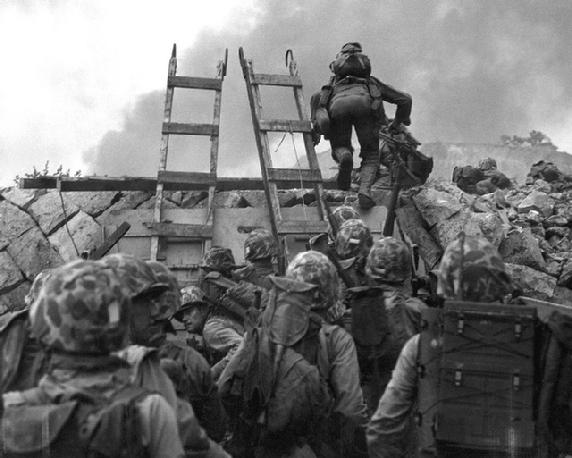PREDECESSOR:
Korean Resistance to Japanese Occupation,
World
War 2
CONCURRENT:
The
Cold War,
The
First Indochina War, China-Taiwan Cold War
SUCCESSOR:
Ongoing
Korean Border Battles and Incidents
Pin
It
The Korean War was the
first major military conflict of the Cold War between the
Western powers and the Communist nations in the years
following World War Two. The war lasted three years, cost
millions of lives, devastated both North and South Korea,
and actually continues to this day as the military
conflict concluded with a truce, not an actual peace
treaty. The Korean War involved all of the major powers
of the 1950s: The United States, United Kingdom, France,
China, and Russia (the Soviet Union), as well as the
relatively new United Nations. The war in Korea was just
one of several major conflicts pitting the Western powers
against Communist forces, but this was the only one at
the time that carried the potential for escalating into a
Third World War. Such a world war could easily have
become a nuclear conflict as both the U.S. and Soviet
Union possessed atomic weapons.
Background
to the Korean War
The Japanese Empire had
ruled Korea from 1895 to the end of World War Two in
1945. Following the Japanese surrender to the Allies,
Korea was occupied by both Soviet and American forces.
Though the original agreement between the Americans and
Soviets had been to unite the two occupied halves of
Korea, both occupying powers set up rival government in
the areas under their control. In the north, the Soviets
set up a Communist regime led by a Korean-born former
Soviet soldier named Kim Il-Sung. In the south, the
Americans set up a Western-style democratic government in
1948 led by President Syngman Rhee.
One reason the two rival
governments were set up was due to the growing Cold War
between the United States and other Western nations on
one side, and the Communist Soviet Union and other
Communist nations on the other side. Though negotiations
were held on the possibility of reunification, North
Korea sponsored a low-level insurgency in South Korea and
engaged in border skirmishes along the 38th Parallel,
which formed the North-South border.
The Communist
dictatorship in North Korea was built on the Russian
Stalinist model; no political freedom, no religious
freedom, no private ownership of property, and total
control held by the Communist Party. The Soviets set up
North Korea with a ready-made veteran military, bringing
in Korean units that had served in the Soviet Union
during World War Two and units of the Chinese Communist
forces made up of ethnic Koreans. These China-based units
had extensive combat experience fighting against both the
Japanese (1937-1945) and against the Nationalist Chinese
forces of the Chinese government in the Chinese Civil War
(1927-1949).
In the South, the United
States set up a government based on the Western-style
democratic model, and built up a South Korean military
force. The U.S. ended its occupation of South Korea in
1948. Tensions between North and South Korea escalated
throughout 1949 and the first part of 1950. In January,
1950, the United States Secretary of State, Dean Acheson,
gave a speech at the National Press Club in which he
described America's "defense perimeter" in the Pacific
and Far East. In his remarks, he included Japan and the
Nationalist Chinese government in what is now called
Taiwan, but he left South Korea out of the areas
described as part of America's defensive commitment. The
North Koreans took the omission of South Korea from the
areas under automatic American protection as a sign that
the U.S. would not interfere in an inter-Korean
conflict.
The
Korean War Begins
With the blessing of
Soviets, North Korean dictator Kim Il-Sung invaded South
Korea on June 25, 1950 with an invasion force numbered
approximately 90,000 men supported by 150 Soviet-supplied
T34 tanks. The North Koreans quickly overran the Southern
capital city of Seoul, and advanced southward.
The United States, led by
President Harry Truman, immediately sent military forces
to engage the North Koreans, and got the United Nations
to enter the war in order to halt the North Korean
aggression.
See
also:
Korean
War Timeline
Korean
War Links and Resources:


